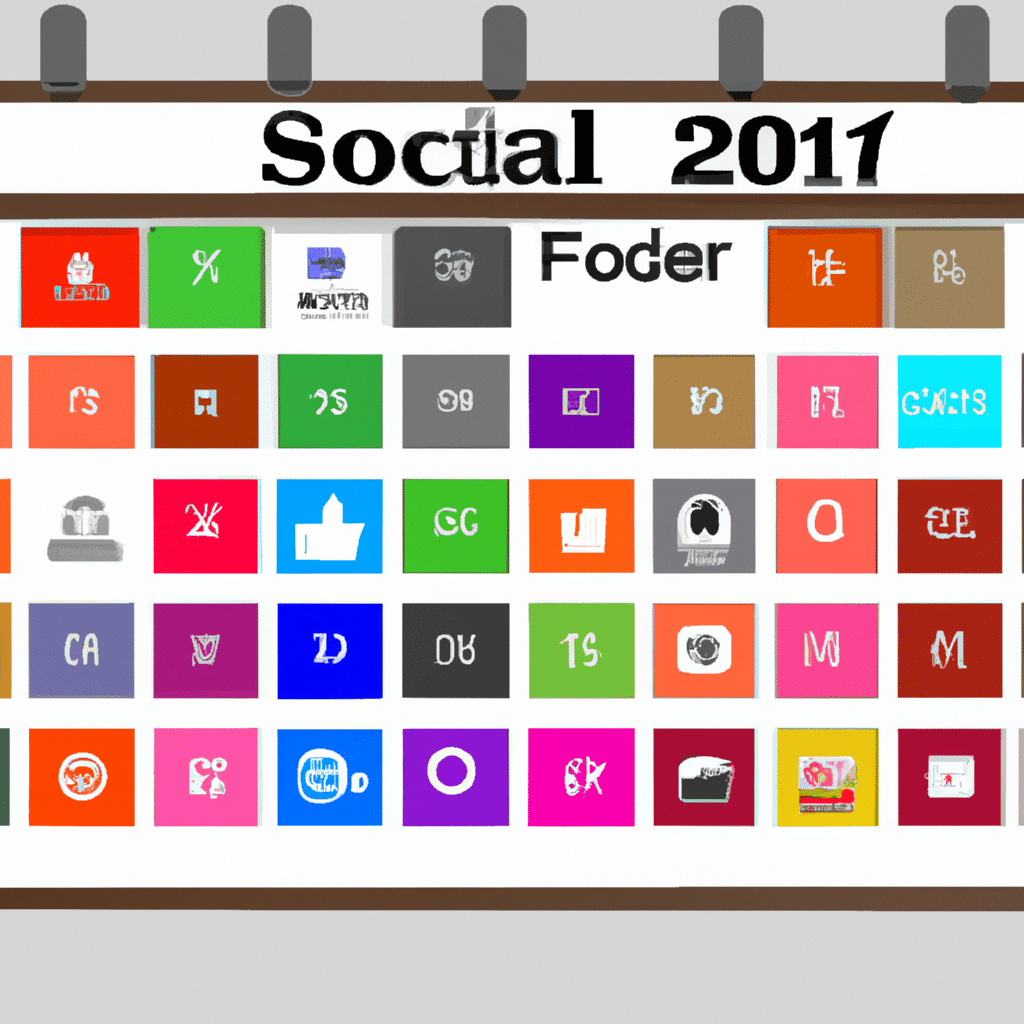In today’s digital age, social media has become an integral part of our lives, and businesses are no exception. Social media is a powerful tool that can help businesses connect with their customers, build brand awareness, and drive sales. However, managing social media can be overwhelming, especially when you’re dealing with multiple platforms, multiple accounts, and multiple posts. That’s where a social media calendar comes in handy.

A social media calendar is a detailed schedule of all the social media posts you plan to publish over a specific period. It helps you plan and organize your content, ensure consistency in your messaging, and optimize your posting schedule to reach your target audience. In this article, we’ll show you how to create a social media calendar that works.
Why You Need a Social Media Calendar
Before we dive into the details of creating a social media calendar, let’s first understand why it’s essential to have one. Here are some reasons why you need a social media calendar:
-
Consistency – Posting consistently on social media is crucial for building brand awareness and engaging your followers. A social media calendar helps you plan and schedule your posts in advance, ensuring that you have a steady stream of content.
-
Efficiency – Planning your social media content in advance saves you time and helps you avoid last-minute scrambling to come up with ideas.
-
Optimization – A social media calendar helps you optimize your posting schedule for maximum engagement and reach.
-
Collaboration – If you have a team working on your social media, a social media calendar helps everyone stay on the same page and avoid duplicate content.
How to Create a Social Media Calendar
Creating a social media calendar may seem daunting, but it’s actually pretty straightforward if you follow these steps:
Step 1: Define Your Goals
Before you start planning your social media content, you need to define your goals. What do you want to achieve with your social media presence? Do you want to increase brand awareness, drive traffic to your website, or generate leads? Your goals will determine the type of content you create and the platforms you use.
Step 2: Conduct a Social Media Audit
To create a social media calendar that works, you need to have a good understanding of your current social media presence. Conduct a social media audit to assess your current performance, identify gaps, and find opportunities for improvement. Some metrics you should consider include:
- Follower count
- Engagement rate
- Reach
- Click-through rate
- Conversion rate
Step 3: Choose Your Platforms
Not all social media platforms are created equal. Depending on your goals and your audience, you may want to focus on specific platforms. Some popular social media platforms include:
- TikTok
Choose the platforms that make the most sense for your business and your audience.
Step 4: Create a Content Plan
Once you’ve defined your goals, conducted a social media audit, and chosen your platforms, it’s time to create a content plan. A content plan outlines the type of content you’ll create, the topics you’ll cover, and the format you’ll use. Some types of content you may consider include:
- Blog posts
- Infographics
- Videos
- Images
- Quotes
- User-generated content
When creating your content plan, make sure to consider the following:
- Your brand voice
- Your audience’s interests and pain points
- The topics that are relevant to your industry
- The keywords you want to rank for
Step 5: Schedule Your Posts
Once you’ve created your content plan, it’s time to schedule your posts. Use a social media scheduling tool to plan and schedule your posts in advance. Some popular social media scheduling tools include:
- Hootsuite
- Buffer
- Sprout Social
- CoSchedule
When scheduling your posts, make sure to consider the following:
- The best times to post on each platform
- The frequency of your posts
- The type of content you’re posting
- The holidays and events that are relevant to your audience
Step 6: Monitor and Adjust
Creating a social media calendar is not a set-it-and-forget-it process. You need to monitor your performance and adjust your strategy as needed. Keep an eye on your metrics and adjust your content plan and posting schedule accordingly.
Conclusion
A social media calendar is a powerful tool that can help you streamline your social media strategy, save time, and optimize your posting schedule. By following the steps outlined in this article, you can create a social media calendar that works for your business. Remember to define your goals, conduct a social media audit, choose your platforms, create a content plan, schedule your posts, and monitor and adjust your strategy as needed. With a well-planned social media calendar, you can take your social media presence to the next level.












